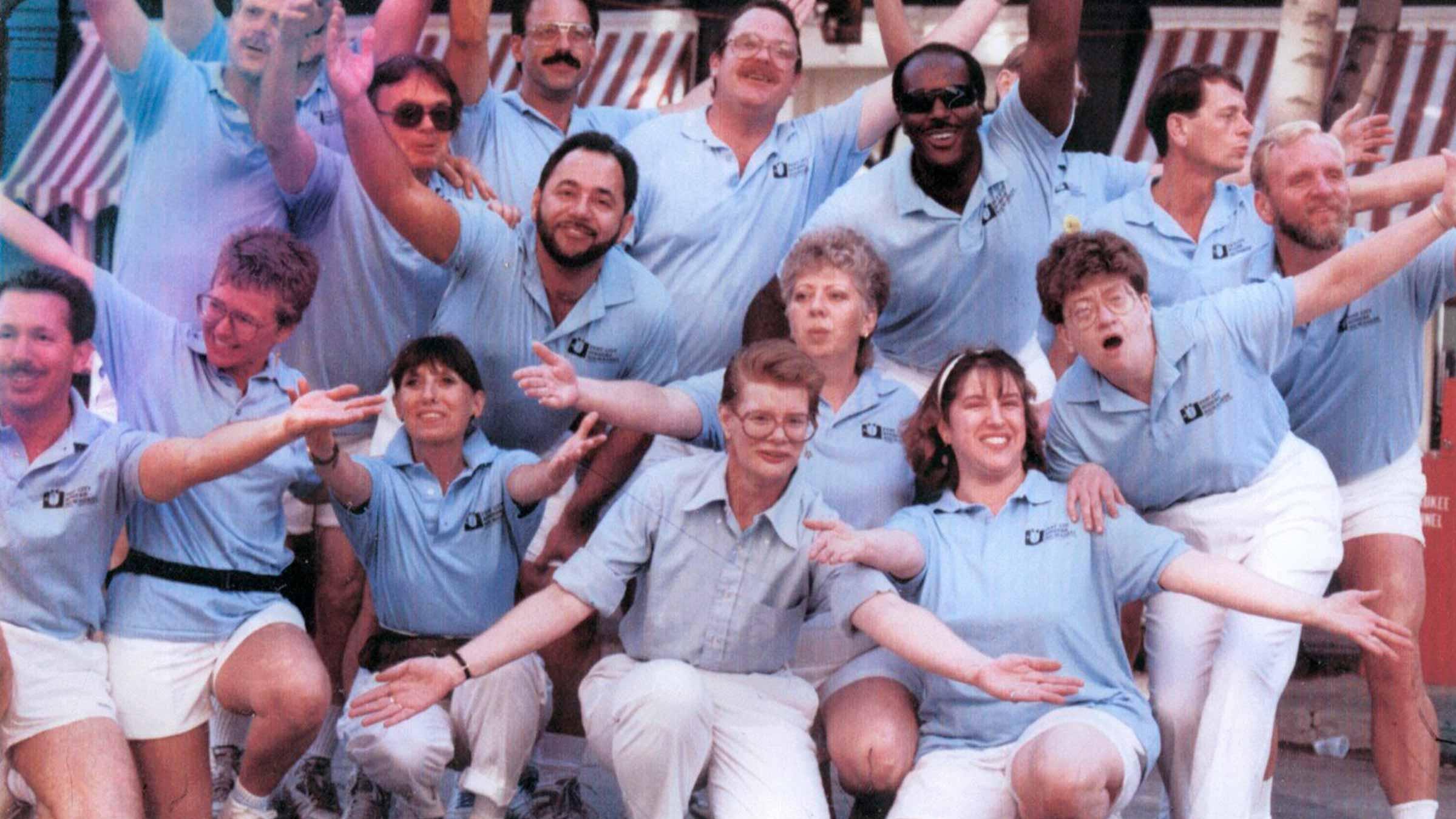Crystal Palace
Bar
402 N Water St
Milwaukee, WI 53202
State Region
Southeast WI
Neighborhood
Historic Third Ward
Year Opened: 1962
Year Closed: 1970
Exact Date Opened: Friday, July 03, 1964
Exact Date Closed: Thursday, January 01, 1970
Clientele Primarily Identified As
Gay
Logo:

The Crystal Palace was a Gay '90s showtunes saloon that served up gay-friendly vibes in Milwaukee's oldest commercial building from 1964 to 1970.
The Crystal Palace was a showtune-singalong, piano-playing, banjo-plunking Gay '90s saloon that served up "peanut parlor" vibes from July 3, 1964 to nearly 1970.
Owners David Coleman and Arthur Newman invested $40,000 to carefully remodel the tavern space of the old Cross Keys Hotel. They lowered the ceiling by raising the floor, which had sunk 31 inches below street level over 110 years time. Everyone knew the Cross Keys was old -- but very few understood exactly how old. Built by Bailey Stimson in 1853, the "Hotel" -- which once hosted Abraham Lincoln for a bath -- ceased renting rooms 75 years before the Crystal Palace opened.
The Crystal Palace was long, dark and narrow, with a long plank of tables on one side, a bar on the other side, and a little stage against the back wall. Employees wore straw hats, curlicue mustaches and carnival barker outfits. It was standing room only most nights -- and extremely, uncomfortably loud. The Crystal Palace was a favorite of Liberace's mother, who celebrated more than one birthday there.
Whether its owners intended to operate a gay bar or not, Crystal Palace certainly attracted a gay following. It was directly across the river from the old "Strip," Milwaukee's earliest gayborhood which flourished in the 400 N. Plankinton block between 1949 and 1966. The Crystal Palace was a whole new cruising ground to conquer.
Lola Carlton was the Crystal Palace's resident piano player. She was one of those truly unique, "Only In Milwaukee" characters who had to be seen to be believed.
Newspapers described her as "hefty," "raucous," "salty," "mouthy," "thunderous," "gravel-voiced" and "sharp-tongued." She was a popular fixture at the Gay 90s and the Tyrolean Towne House.
"Lots of times I'd just run into the beauty shop and have them brush the gravel and grit out of my hair before the show," said Lola. "They'd do up my face and I'd run off to the show."
She was billed as the "Truck Driving Tickler" when she broke into nightlife at Lakota's (601 W. Wisconsin Ave.) in 1939.
"Those were the days when the places kept open 24 hours a day," she said, "and if the tips kept flowing, we kept going."
A single mother of six, Lola (aka Lola Smith Rieckhoff) paid the bills by driving a bulldozer on freeway construction projects by day and playing piano in nightclubs by night. She worked 18 hours a day for 20 years. Eventually, she made enough money to buy herself three dump trucks (!)
Lola continued playing Big Band piano at local venues, including Clay's Castaways, until 1993. After that, she just disappeared. "Whatever Lola wants, Lola works mighty hard for," said the Milwaukee Journal.
Coleman was optimistic about the neighborhood's future. Long before anyone else, he envisioned the Third Ward blossoming with art, antique and novelty shops.
"You could have shot a cannon down this street not too long ago. My friends thought I had gone mad for even wanting to go into this," he said.
By the mid-1960s, this block of ancient, unusual Water Street buildings was known as "Calamity Row" by local papers. It was seen as "the last bit of the gaslight era" and attracted whimsical turn-of-the-century businesses, like Potato Brothers General Store and the Cross Keys Tonsorial Parlor.
This reverence for quaint, old-timey experiences is very telling about the mood of that moment. Like most cities of the 1960s, Milwaukee was erasing its historical architecture fast and furiously. People gravitated towards historical recreations even as real history was being lost every day.
Sadly, the extraordinary Someplace Else (408 N. Water St.) next door -- in the amazing 1880s Fritz Gust tavern, decorated with carved woods -- was one of the lost. After three years at this address, it was ordered to vacate within 30 days. The bar moved two blocks north to 632 N. Water Street. It remained very popular until destroyed by fire in February 1989.
The Crystal Palace was destined to join the rubble, but the building received a surprising reprieve in March 1967. Thanks to architectural historian H. Russell Zimmerman, Milwaukee realized that the Cross Keys Hotel might just be the longest-standing commercial building in the city. Inspired by the disregard for historic structures, like the nearby Blessed Virgin of Pompeii Church and Chicago and North Western Railway Depot, citizens began to consider preservation, adaptation, and reuse options over widespread destruction. Groups like Land Ethics, now known as Historic Milwaukee, began to organize in the ashes of these lost landmarks.
However, the whimsical "turn of the century" vibes of Calamity Row eventually fell out of favor. The Crystal Palace closed on New Year's Day 1970. It's unknown whatever happened to owners Coleman and Newman. The space, minus all the Gay 90s kitsch, became the Filling Station tavern for about a year.
In 1971, the River Queen opened at 402 N. Water Street and quickly became the out and proud gay bar of the Stonewall Generation. Ironically, most of what people remember about River Queen: red velvet, crystal chandeliers, brass fixtures, the bordello-like interiors, etc., was actually installed during the Crystal Palace era.
